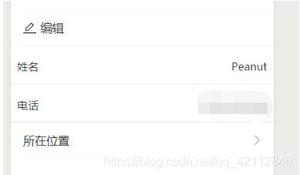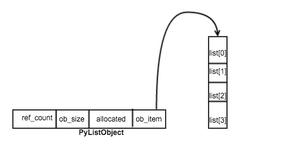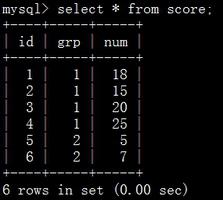日期值比较Python列表
我正在重写一个csv文件,我正在寻找创建一个函数,通过列表中的项目进行比较。更清楚的是,这里是一个例子。日期值比较Python列表
我的CSV转换为表:
import csv with open('test.csv', 'rb') as csvfile:
spamreader = csv.reader(csvfile, delimiter=';', quotechar='|')
lista = list(spamreader)
print lista
>>>[['"Fecha"', '"Cliente"', '"Subastas"', '"Impresiones_exchange"', '"Fill_rate"', '"Importe_a_pagar_a_medio"', '"ECPM_medio"'],['20/12/2017', 'Martin', '165.665', '3.777', '2,28%', '1,58', '0,42'], ['21/12/2017', 'Martin', '229.620', '18.508', '8,06%', '14,56', '0,79'], ['22/12/2017', 'Martin', '204.042', '48.526', '23,78%', '43,98', '0,91'], ['20/12/2017', 'Tom', '102.613', '20.223', '19,71%', '17,86', '0,88'], ['21/12/2017', 'Tom', '90.962', '19.186', '21,09%', '14,26', '0,74'], ['22/12/2017', 'Tom', '60.189', '12.654', '21,02%', '11,58', '0,92']]
因此,首先,我需要comparate马丁和汤姆的所有值。我的意思是,item[2] of 20/12/2017 to item[2] of 21/12/2017. item[2] of 21/12/2017 to item[2] of 22/12/2017。我需要这些用于我的清单中的所有项目(项目[2,3,4,5,6]。日期是最重要的值,因为这个想法是一天比较的。)
结果我希望是这样的:
21/12/2017 Martin item[2]: smaller
item[3]: smaller
item[4]: bigger
item[5]: smaller
item[6]: smaller
22/12/2017 Martin
item[2]: smaller
item[3]: bigger
item[4]: bigger
item[5]: bigger
item[6]: bigger
21/12/2017 Tom
item[2]: smaller
item[3]: bigger
item[4]: bigger
item[5]: bigger
item[6]: bigger
22/12/2017 Tom
item[2]: smaller
item[3]: smaller
item[4]: smaller
item[5]: smaller
item[6]: bigger
如果我想显示的名称为“Subastas”,而不是项目[2],所有的名字太...我怎么能做到这一点
回答:
让我们开始呢?注意到你有一些数据的键是(date, name)。一个相当明显的方法是将数据存储在一个以(date, name)为关键字的字典中。
所以,把你的发布数据mylist,
mylist = [['"Fecha"', '"Cliente"', '"Subastas"', '"Impresiones_exchange"', '"Fill_rate"', '"Importe_a_pagar_a_medio"', '"ECPM_medio"'],['20/12/2017', 'Martin', '165.665', '3.777', '2,28%', '1,58', '0,42'], ['21/12/2017', 'Martin', '229.620', '18.508', '8,06%', '14,56', '0,79'], ['22/12/2017', 'Martin', '204.042', '48.526', '23,78%', '43,98', '0,91'], ['20/12/2017', 'Tom', '102.613', '20.223', '19,71%', '17,86', '0,88'], ['21/12/2017', 'Tom', '90.962', '19.186', '21,09%', '14,26', '0,74'], ['22/12/2017', 'Tom', '60.189', '12.654', '21,02%', '11,58', '0,92']] 转换它(除了第一行与列标签),以这样的词典:
import datetime mydict = {}
for row in mylist[1:]:
date = datetime.datetime.strptime(row[0],'%d/%m/%Y')
name = row[1]
mydict[(date,name)] = row[2:]
棘手位在这里是你的日期是形式为dd/mm/yyyy的字符串,但你稍后想要在一天和下一天之间进行比较。这并不令人意外,因为您将此问题作为您问题的主题。所以你需要把字符串日期转换成你可以进行适当比较的东西。这就是strptime()所做的。
您的数据现在看起来是这样的:
>>> mydict {(datetime.datetime(2017, 12, 20, 0, 0), 'Martin'): ['165.665', '3.777', '2,28%', '1,58', '0,42'],
(datetime.datetime(2017, 12, 22, 0, 0), 'Tom'): ['60.189', '12.654', '21,02%', '11,58', '0,92'],
(datetime.datetime(2017, 12, 21, 0, 0), 'Martin'): ['229.620', '18.508', '8,06%', '14,56', '0,79'],
(datetime.datetime(2017, 12, 21, 0, 0), 'Tom'): ['90.962', '19.186', '21,09%', '14,26', '0,74'],
(datetime.datetime(2017, 12, 20, 0, 0), 'Tom'): ['102.613', '20.223', '19,71%', '17,86', '0,88'],
(datetime.datetime(2017, 12, 22, 0, 0), 'Martin'): ['204.042', '48.526', '23,78%', '43,98', '0,91']}
下一个要观察的是,你的数据由浮点数字和百分比,但表示为字符串。这使事情变得复杂,因为你想做比较。如果你比较'165.665'与'229.620'第一个会更小,这是你所期望的
['165.665', '3.777', ... ['229.620', '18.508', ...
:先取2个数据点的马丁。但是,如果您将'3.777'与'18.508'进行比较,则第一个将会更大:不是您所期望的。这是因为字符串按字母顺序进行比较,3在1之后。
更糟糕的是,您的数据有时以小数点表示逗号,有时不表示。
所以你需要一个函数来对字符串进行数值转换。这里是一个天真的一个为你的数据的作品,但很可能需要进行在现实生活中更稳健:
def convert(n): n = n.replace(",",".").replace("%","")
try:
return float(n)
except ValueError:
return 0e0
现在你在一个位置做比较:
for (day, name) in mydict: previous_day = day - datetime.timedelta(days=1)
if (previous_day,name) in mydict:
print datetime.datetime.strftime(day,"%d/%m/%Y"), name
day2_values = mydict[(day, name)]
day1_values = mydict[(previous_day, name)]
comparer = zip(day2_values, day1_values)
for n,value in enumerate(comparer):
print "item[%d]:" % (n+2,),
if convert(value[1]) < convert(value[0]):
print value[1], "smaller than", value[0]
else:
print value[1], "bigger than", value[0]
print
我有使消息更加明确,例如,item[2]: 165.665 smaller than 229.620。这样,您就可以轻松验证程序是否正确,而无需重新查看数据,这很容易出错且乏味。如果你愿意,你可以随时让这些信息不那么明确。
22/12/2017 Tom item[2]: 90.962 bigger than 60.189
item[3]: 19.186 bigger than 12.654
item[4]: 21,09% bigger than 21,02%
item[5]: 14,26 bigger than 11,58
item[6]: 0,74 smaller than 0,92
21/12/2017 Martin
item[2]: 165.665 smaller than 229.620
item[3]: 3.777 smaller than 18.508
item[4]: 2,28% smaller than 8,06%
item[5]: 1,58 smaller than 14,56
item[6]: 0,42 smaller than 0,79
21/12/2017 Tom
item[2]: 102.613 bigger than 90.962
item[3]: 20.223 bigger than 19.186
item[4]: 19,71% smaller than 21,09%
item[5]: 17,86 bigger than 14,26
item[6]: 0,88 bigger than 0,74
22/12/2017 Martin
item[2]: 229.620 bigger than 204.042
item[3]: 18.508 smaller than 48.526
item[4]: 8,06% smaller than 23,78%
item[5]: 14,56 smaller than 43,98
item[6]: 0,79 smaller than 0,91
要显示"Subastas",而不是item[2],记得,列标签是在mylist的第一个元素:
>>> mylist[0] ['"Fecha"', '"Cliente"', '"Subastas"', '"Impresiones_exchange"', '"Fill_rate"', '"Importe_a_pagar_a_medio"', '"ECPM_medio"']
所以将它们包括在输出中,你需要改变这一行:
print "item[%d]:" % (n+2,), 到
print mylist[0][n+2] + ":", 回答:
您可以加载LISTA成数据帧,然后从那里执行比较:
import pandas as pd import numpy as np
headers = lista.pop(0)
df = pd.DataFrame(lista, columns = headers)
martin = df[df['"Cliente"'] == 'Martin']
tom = df[df['"Cliente"'] == 'Tom']
merge = pd.merge(martin, tom, on = '"Fecha"')
stats = headers[2:]
compare = ['"Fecha"']
for index, row in merge.iterrows():
for x in stats:
merge[x+'_compare'] = np.where(row[x+'_x'] > row[x+'_y'], 'Martin', 'Tom')
if x+'_compare' not in compare:
compare.append(x+'_compare')
print(merge[compare])
#output
"Fecha" "Subastas"_compare "Impresiones_exchange"_compare "Fill_rate"_compare "Importe_a_pagar_a_medio"_compare "ECPM_medio"_compare
20/12/2017 Tom Martin Martin Martin Tom
21/12/2017 Tom Martin Martin Martin Tom
22/12/2017 Tom Martin Martin Martin Tom
以上是 日期值比较Python列表 的全部内容, 来源链接: utcz.com/qa/265131.html





